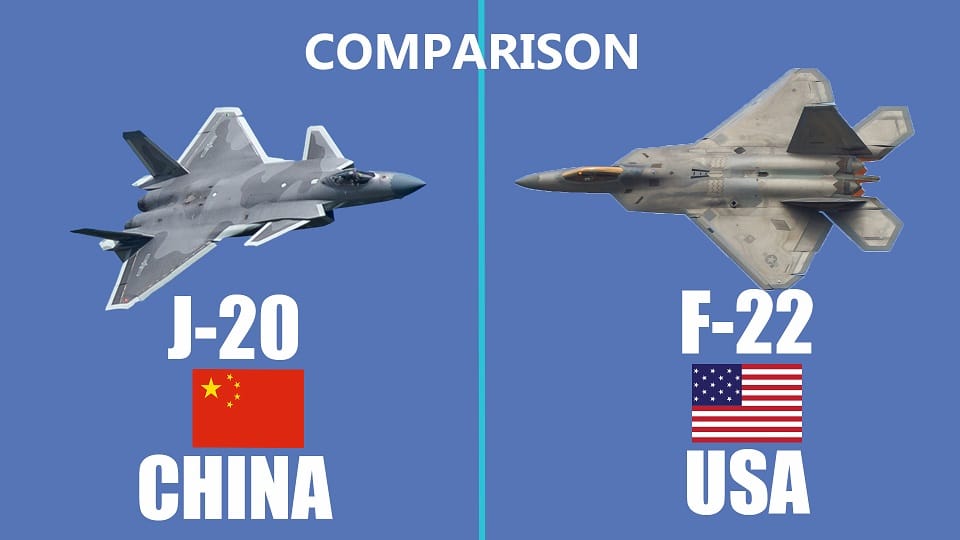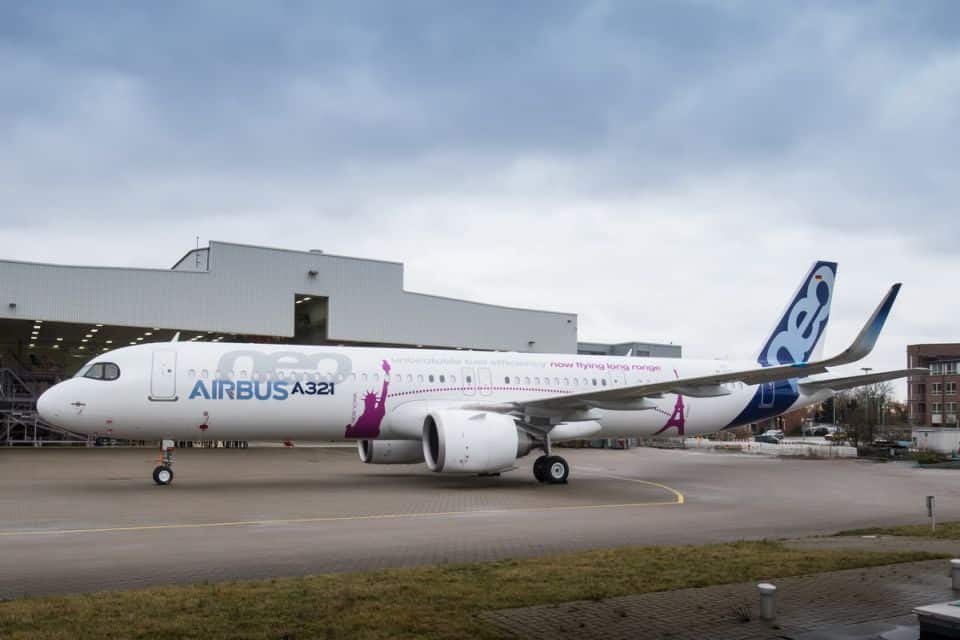Aerospace
Can the J20 from China match the American F-22 ? Let’s look at it Comparison.
The J20 from China surpasses the F22 from America. Let’s look at it Comparison.

In this article, we’ll compare the J 20 which was made in China to the F 22 which was made in the USA.
-
China’s J 20
Beginning in early 1990, the J-20 program was carried out by the Chengdu Aerospace Corporation in 2008, and on January 11, 2011, it had its first flight. eleven years ago Additionally, this aircraft started operating service in 2017. Currently, Chengdu has produced close to 150 aircraft.
The J-20 is the third operational fifth-generation stealth fighter in the world, following the F-22 and F-35.
An adaptation of that can be found in the J20. The newest model, the J 20S, features thrust vectoring control technology, giving the pilot a major advantage for quick action and aircraft escape from different angles. The newest aircraft also has a Loyal Wingman system that enables the two pilots to cooperate to achieve the goal. In addition to learning the aircraft, a twin-seat configuration may have a few advantages in pilot training and strike missions.
F-22 Raptor jet sets new record, 28 air-to-air missiles loaded & fired(Opens in a new browser tab)
-
American F 22
The F-22 can fly at sustained supersonic speeds and can reach a maximum height of 10 miles. The “Supercruise” feature of the F-22 allows it to fly faster than Mach 1.5 without utilizing afterburners. The F-22 Raptor can accelerate quickly and perform razor-sharp turns even at high speeds.
Comparison of global 7500 v/s Gulfstream 700(Opens in a new browser tab)
The F-22 fighter jet’s weapons are primarily designed to be used against airborne targets. It’s crucial to realize that the pilot is capable of carrying out standoff strikes on targets on the ground. The US F-22’s lethal long-range air-to-air and air-to-ground ordnance is one of its numerous advantages. The stealth technology used by the F-22 fighter allows it to operate practically radar-undetected.
The F-22, a fighter jet of the fifth generation, flew for the first time on September 7, 1997, and made its premiere in 2005. The export of this aircraft was prohibited due to technological confidentiality. Additionally, a costly budget program forced the end of this aircraft’s production in 2011. Although this was the case, Lockheed Martin upgraded their technology to stay up with the most recent fighter jets. Only 195 aircraft had been built up to this point.
- The J20 has the option of a single or two seats, whereas the F 22 has a single crew.
- The J 20 is 69.7 feet long, whereas the F 22 is 62 feet long.
- The J 20’s wingspan is 42.8 feet, whereas the F 22’s is 44 feet.
- The J 20 is 15.5 feet tall while the F 22 is 16.8 feet tall.
- The J 20 weighs 17,000 kg empty, compared to 19,700 kg for the F 22.
- The J 20 can carry 37,000 kg, whereas the F 22 can carry up to 38,000 kg.
- The F 22 has a maximum fuel capacity of 12,000 kg, whereas the J 20 also has this capability.
- The F-22 is powered by two Pratt & Whitney turbofan engines that provide a maximum thrust of 116 KN and a maximum afterburner thrust of 156 KN.
- The Chinese-built 2 Shenyang WS-10c afterburning engine that powers J 20 generates 142 Kn of thrust afterburner.
- The J 20 has a mach speed of Mach 2.0, which is 2,414 km/hr, while the F 22 has a speed of 2,695 km/h or a mach speed of 2.25.
- F-22 has an external fuel tank and can travel 3,000 kilometers or more.
- J 20 features an external fuel tank and a 5,500 km range.
- The J 20 has a 2,000 km combat range, compared to the F 22’s 850 km.
- The operational ceiling for each aircraft is 66,000 feet.
F22 Armament :
- The F-22 has an internal bay with a 6 AIM, an AMRAAM, and a 2 AIM sidewinder loadout for air-to-air missions, as well as a single 20 mm Vulcan rotary cannon with a 480-round capacity.
- Two JDAM explosives can be transported by it for air-to-ground missions.
- Two AIMs and two sidewinders.
- It includes 4 hardpoints for weapons under the wing pylon station and 4 external hardpoints for AIM Amraam weapons.
- The F-22 may be equipped with a wide range of weaponry.
- It is equipped with APG radar, which has a narrow beam and can identify things at 150 miles and targets more than 250 miles away.
J 20 Armament :
- J 20 contains a missile launch detector in addition to a radar warning receiver with a 460 km larger detection range. It has Flare to protect itself from IR missiles.
- It has an internal weapons compartment with an 11,000 kg maximum armament capacity.
- The PL 10, 12, 15, 21, and LS 6 Short to Long-Range AAM missiles are included in this, in addition to anti-radiation missiles.
- It also has four under-wing pylons that can hold drop tanks.
- It possesses an active electronic scanning array radar.
- It has an EOTS 86 electro-targeting system and an infrared search and track system.

Aerospace
Which is bigger 777x or 787 aircraft ?

The 777X is a new series of the Boeing 777 family and is designed to be larger and more efficient than its predecessor. It features two variants: the 777-8 and the 777-9, being the larger of the two.
The Boeing 777X emerges as the larger sibling within the Boeing family, representing a significant leap forward in both size and efficiency. Comprising two variants, the 777-8 and the 777-9, the latter takes the crown as the larger of the two. With its expansive fuselage and impressive wingspan, the 777X is tailored for long-range journeys and boasts a substantial passenger capacity.
On the other hand, the Boeing 787, affectionately known as the Dreamliner, occupies a niche in the market as a smaller yet formidable aircraft designed for medium to long-range flights. Its distinguishing feature lies in its composite fuselage, a technological marvel that renders it lighter and more fuel-efficient compared to conventional aluminum counterparts. The Boeing 777X is larger than the Boeing 787 aircraft.
When it comes to passenger capacity, the 777-9 reigns supreme, typically accommodating a sizeable contingent of 400-425 passengers in its standard configuration. In contrast, the 787, with its more modest dimensions, typically carries between 240-290 passengers, depending on the variant and layout.
One of the remarkable innovations introduced with the 777X is its folding wingtips, a feature designed to address the logistical challenges of accommodating such a large aircraft in conventional airport gates. These folding wingtips enable the 777X to retract its wings, allowing it to fit into gates designed for smaller aircraft while still reaping the benefits of an extended wingspan during flight, thereby enhancing fuel efficiency and operational flexibility
Aerospace
China Secures Production Certificate for Mass Production of Pilotless eVTOL Aircraft

The first passenger-carrying pilotless electric vertical takeoff and landing (eVTOL) aircraft in the world, the EH216-S, has received the Production Certificate for its eVTOL aircraft from the Civil Aviation Administration of China (CAAC).
This is a significant milestone for EHang Holdings Limited, the leading UAM technology platform company in the world. This outstanding accomplishment is another big step towards mass manufacturing for the eVTOL aircraft and the ensuing commercial operations, building on the ground-breaking acquisition of the Type Certificate and the Standard Airworthiness Certificate for the EH216-S.
The PC is a crucial certificate that the aircraft maker receives from the CAAC, the country’s aviation authority. By obtaining this certificate, EHang has demonstrated that it has set up a quality management system for mass production that satisfies the airworthiness regulation standards set forth by the CAAC, and the company has been given permission to continue producing mass quantities.
It is also a strong guarantee of the calibre of the goods made by EHang. Raw materials, supplier management, manufacturing organisation, production quality control, aircraft pre-delivery test, after-sales repair and maintenance, etc. are all included in the mass production quality management system for the EH216-S.
To ensure that every aircraft and its components that roll off the production line strictly adhere to the approved type design and safety requirements, the system sets clear guidelines and documentation for every step in the production procedure. This ensures comprehensive traceability and safety control.
Aerospace
Four Airbus A380 Superjumbos lined up to be scrapped

In a strategic move aimed at reclaiming valuable resources from the iconic Airbus A380 aircraft, VAS Aero Services and Dr. Peters Group have announced a significant collaboration.
This partnership marks a milestone in aviation logistics and aftermarket services, with four of these colossal planes slated for teardown and redistribution of used serviceable material (USM).
The venture between VAS Aero Services, renowned for its expertise in aircraft dismantlement, and Dr. Peters Group, a prominent Germany-based investment fund management firm, underscores a commitment to sustainable aviation practices. This isn’t their first foray into scrapping A380s; their successful partnership has already seen the dismantlement of these aircraft, making them pioneers in this niche.
Under the agreement, the latest consignment brings the tally to eight A380s entrusted to VAS by Dr. Peters Group. Managing Director Christian Mailly of Dr. Peters Group emphasized the trust placed in VAS, citing their unparalleled capabilities in dismantlement and aftermarket sales network. It’s a strategic move in response to the growing demand for quality USM parts, particularly with the resurgence in reliance on the A380.
Notably, the teardown process will be carried out at various locations, optimizing the positioning of harvested parts to cater to different markets. While some parts will be positioned in Europe to support operators in the region and the Middle East, others will remain in the Asia-Pacific region. This meticulous strategy ensures efficient access to spare parts, benefiting MROs and airlines across these markets.
The decision to retire these A380s comes at a time when operators are reassessing fleet strategies amidst evolving market dynamics. Despite initial plans for quick retirement due to the emergence of more fuel-efficient alternatives, factors such as a rebound in long-haul demand and delays in new widebody deliveries have prompted operators to reconsider. The A380, with its unique capacity and capabilities, presents a practical solution for short-term capacity management.

























